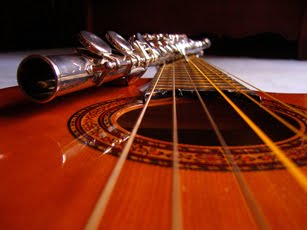
For so many years, I searched for the book (and the video) on Vincent van Gogh’s story, Lust for Life, but failed. YouTube came to the rescue the other day and piped out 12 video clips of the 1956 classic movie starring Kirk Douglas as the painter and Anthony Quinn as Paul Gauguin. (Tag: lust for life 1, 2, etc.) (I was too young to watch it then.)
In spite of its oldness, the film’s story-line, acting, dialogue and cinematography exude a raw freshness and earthy sincerity one hardly finds in many modern films bent on being romantically cute or technologically glamorous. The passion of the main characters is matched by the production’s own intense desire to highlight the “lust” that drove a great painter to heights or depths of artistic achievement and moral self-discovery.
In one scene, van Gogh and Gauguin argue over how the sky should be rendered on canvas. The former suggests it should have texture to make it come alive, to which the latter adamantly cries, “That’s the way I see it -- flat!” Passion vs. passion. Perspective vs.perspective. Style vs. style. Two great artists looking at one subject with varying creative eyes and minds. Paul eventually leaves the tortured van Gogh, who in his extreme loneliness and manic depression, ends up in an asylum.
Art, however, does not make us lose sanity; it is our inordinate passions or lusts for the things we value, art being only one possible avenue leading to our so-called self-actualization. For how can art, which is a by-product of benevolent nature, be a source of evil? How can wine, a natural result of physical processes, be destructive per se? It is what we do with the good or the freedom we have that creates imbalance and evil in this world.
In van Gogh’s case, art set him free. His desire to capture the “dignity of toil” in his paintings of peasants and factory-workers helped him to express his Christian duty to honor and uplift the poor and the oppressed. His seemingly futile efforts in duplicating nature’s beauty in two-dimension somehow provided a means for channeling his creative energies which his loneliness sought to imprison. It was also his art which kept him alive in body and spirit, as well as in the eyes of his dear brother Theo, his friends and, perhaps, many of us today.
Yes, art is meant to expand our minds, our souls and our relationships. That is where the real and encompassing value of art lies. Hence, anything that diminishes our humanity, as individuals and as a community, is not art but vanity or whatever other clever disguises society has provided for art. And so, when we use art for self-glorification, we corrupt art and ourselves. When that happens, we isolate ourselves from others. As in van Gogh’s case, our isolation may lead to insanity.
Today, like van Gogh, Philippine society totters near the edge of insanity over the issue of the National Artist Awards. With politics and economics thrown into the overheated pan for good measure, what we have brewing is a recipe no less toxic and violent as those we digest daily through media from the conflicts in Basilan or Afghanistan. A virtual war waged with words that could only lead to the disappearance of Harmony, Peace and Unity – a fate worse than insanity.
On that corner, stand NA awardees themselves and their friends opposing the nominations of Alvarez, Caparas and others. On the other corner, stand the nominees and their supporters. The first group claims the violation of due process while the second says otherwise. Add to these, public opinion and we hear chaotic noise swelling up to heaven where it ends up as one common voice, saying: “I am right!” Sometimes, it sounds like “I have the right!”
Where is the freedom that art promises us in our minds and souls? The sacrifice that van Gogh went through to try to attain artistic and moral excellence? The purity of purpose that artists start out with but very often end up losing when tempted by the carrot-stick of honors, allowances and national glory? Do we as artists ever feel the profound inadequacy van Gogh felt when he encountered beauty in nature? Or as persons, do we feel at all privileged and overwhelmed by the great Artist and Creator Who gave us everything and promised us honor which we, in our pride, have appropriated for ourselves or for others?
The honor and support we give people who attain excellence is but a recognition of the tiny reflection of the goodness that comes from Heaven’s benevolence. The psalmist said, “Promotion comes from God.” A person achieves greatness because he or she has harnessed the talents granted to him or her. There may be nothing wrong with wanting to get awards; but, perhaps, there is something vain about it. There may be nothing wrong with giving awards; but, perhaps, there is something presumptuous about it. Vanity feeding on vanity. Or as Solomon said, “Vanity of vanities, all is vanity!”
Laurels -- and a good name -- were once prized above gold for what they truly represented: honor and glory in human accomplishment. The human desire for recognition is a normal attitude. Even dogs love to be patted on the head. But when money, position and the power they bring entered the picture, the predators of vanity grew and multiplied. We institutionalized awards and gave them left and right. Even religion handed out titles to those who exemplified saintliness or ecclesiastical devotion. Hence, the Apostles and saints now adorn the pillars of Rome and the many churches in far-flung places, something they would have frowned upon in their lifetime. We enacted laws to proclaim who should be honored and how they should be placed so that others may emulate them. Living or dead, our great achievers are set up high above the masses to see and adulate. Our art, in general, has become nothing but a consensual form of idolatry. Vanity of vanities! Who could be higher and greater than the One Who was lifted up on a cross and raised into Heaven to rule over all things? We want real honor? Do what He tells us to do.
But then we say: Our laws have declared it and must be followed. In case the people are divided on what the law says, let the judges decide. Now, we can be still and wait for the verdict. Really? Of course not! The protests will continue (until people get what they want – what pride!) and the counter-protests will not cease (neither will their own pride give in). Oh, vanity of vanities!
Perhaps, not unlike van Gogh, we have painted ourselves into a corner because of our inordinate passion, but for the wrong things. Our carnal obsession for recognition and for legal redress has blinded us to the simplicity of what truly matter in art or in life, which are one in essence: Glory, Honor and Immortality. We really think we humans can award that to ourselves? God sent His Son to make that a reality and even added Peace as a concomitant reward. Yet, in all our puny goal of lifting ourselves above our own mediocrity, we sacrificed Harmony and Peace which are the only strong foundation of a truly creative and progressive society. The Prince of Peace lived and died to make it a reality. Yet, today, we spit at His face and cry blood once again.
Our country prides itself for being Christ’s follower and yet we have failed to even listen to His way of settling things. Brother goes to court against brother. In this you shame yourselves. Whether it is a political, civil or domestic case, the court of law is called in to arbitrate. Yet, it is merely the start of an unending conflict of interests and opinions. It will rage on for years and even through generations. Who will suffer? Not just our children but also our children’s children? We might attain a social, legal, military or political peace but what simmer underneath will be the hurt pride, the gnawing hatred and the bitter anger. What finally remains of the fabric of society is made up of flimsy, self-oriented egos pulling hard in many directions. Before Heaven, we appear poor, naked and blind.
Vanity of vanities! What we are fighting for are honors that will rot in this world. These are temporal glories based on pitiable human efforts. The greatest symphony ever written and the best painting by any human are but tiny reflections of the beauty God put in our lives. Why can’t we wait for the true riches or genuine rewards which He alone may grant? Why do we squabble over our own paltry rights? Why not rather be defrauded? Why not give in? Why not humble yourself and wait for God to promote you?
“Whom the gods wish to destroy, they make crazy.” Whoever said that serves a warning for us now. A nation divided over how its government is being run, will always end up being divided. A society partitioned over who should receive honor and who should not, will end up dishonored. But a people who seek approval from God and honor Him with their righteous and submissive ways will attain Peace, Glory, Honor and Immortality. Not just in the world to come but right here and now.
God’s artist waits on His favor in silence and does not seek vainglory. For True Art builds Life, Peace and Harmony, not Death, War and Conflict. Against such Art there is no law.
(Painting above: Van Gogh's "Sower with Setting Sun")




